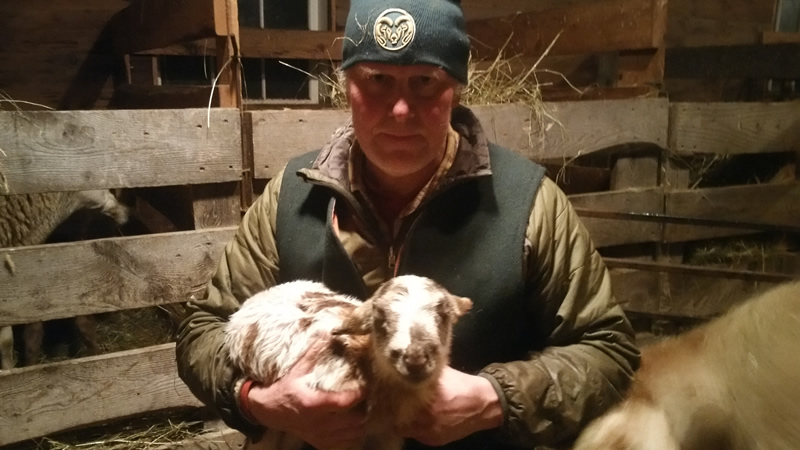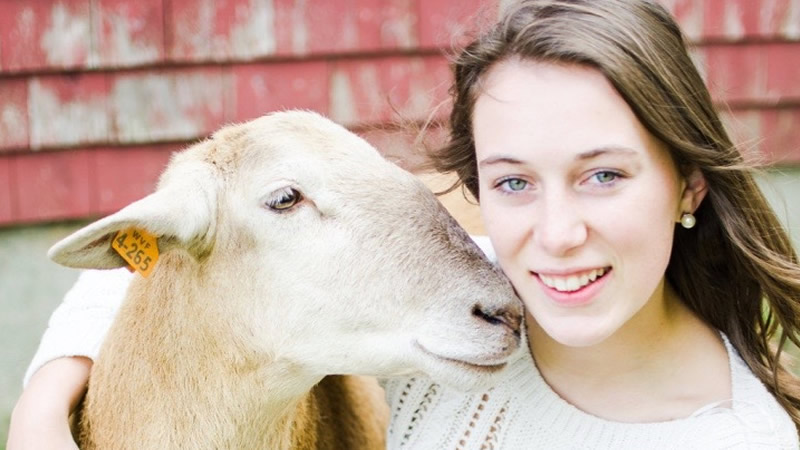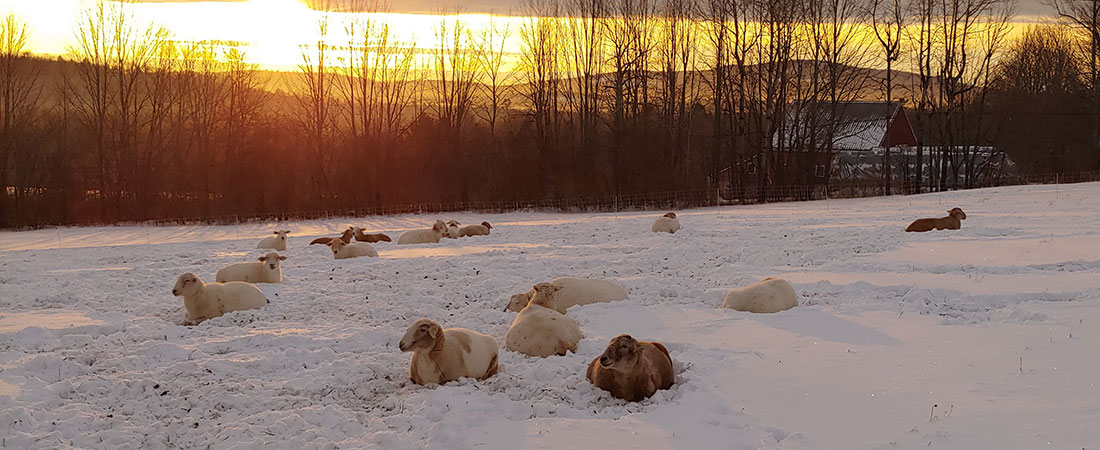Waldoview Farm
Waldoview Farm began in 1994 when we purchased 90 acres from a retired dairy farmer in the coastal Maine town of Winterport. We never envisioned having more than a few sheep to provide lambs for our freezer and to sell to a few friends. We chose Katahdin Hair Sheep, a breed that was developed right here in Maine, for their low maintenance and mild flavored lamb. After a few years of raising them, we were fascinated with the process of improving the Katahdin breed and somewhat surprised by the demand for our lambs. Today, we have more than doubled our acreage and manage close to 50 additional acres of hay land owned by neighbors and friends. Our ewe flock varies from year to year from 50 to 80 commercial and registered individuals.
For many years, Waldoview Farm managed its operation with a “conventional” approach by lambing in late winter and providing supplemental feed (grain) to ewes during their lactation. Lambs were limit-fed (creep fed) grain (1 lb/head/day) until pasture was ready in mid May. Once on pasture, all ewes and lambs were maintained on an all-forage diet through intensive rotational grazing until they are sold, slaughtered, or returned to the barn for winter. More recently, we subdivided the ewe flock into two management groups. One group would be maintained according to the traditional “conventional” approach that had been successful since our inception. The second group of ewes would lamb on pasture and be maintained entirely on a forage diet with no supplement of grain or other concentrates. This latter approach, which we call “all-forage” was initiated to better meet the growing demand for our breeding stock among commercial breeders in southern New England and beyond that are marketing organic and grass-fed lamb.
About the Farmers

Tom Hodgman – Co-owner and co-operator. Tom grew up in a 4-H family raising and showing dairy cattle in southern New Hampshire. Tom has a B.S. in Environmental Science from Unity College and an M.S. in Range Management (i.e., grazing lands management) from Washington State University. Tom worked for 28 years as a Wildlife Biologist, Researcher, and Educator until 2016 when he began farming full time. Tom’s experience working with small ruminants in graduate school led to an interest in operating a small sheep farm. In 2019, he was elected to the Board of Directors for the National Sheep Improving Program serving as the Katahdin Breed Representative.

Lindsay Hall Hodgman – Co-owner and co-operator. Lindsay grew up in New Jersey on a farm dominated by riding and driving horses. She has a B.S. in Wildlife Management from Washington State University. A 30+ year career professional with USDA Natural Resources Conservation Service, Lindsay serves as Assistant State Soil Scientist for the State of Maine. On the farm, Lindsay participates in all aspects of operation and is an accomplished grazier.

Natalie Hodgman – Growing up on a sheep farm, Natalie was raised around animals and spent many years as a 4-H member. She showed Katahdins at fairs and youth shows across New England. With her sights on a career in environmental policy, Natalie attends Colorado State University where she is working on her B.S. in Ecosystem Science and Sustainability with a minor in Political Science.




